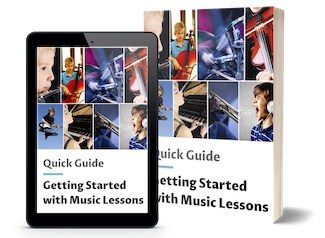Best Beginner
Acoustic guitar
-
Overall: 9/10
-
Best Feature: Scale Length: 22.75"
-
TedScore™: 9/10
Best Acoustic
Guitar
for Small Players
-
Overall: 9/10
-
Best Feature: Solid Sitka Spruce Top
-
TedScore™: 9/10
Best Overall
Acoustic Guitar
-
Overall: 9/10
-
Best Feature: Unique Small Body Design with Solid
Sitka Spruce Top -
TedScore™: 9/10
Starting your musical journey with the best 3/4 acoustic guitar for beginners is like exploring a new realm of melodies and captivating rhythms.
These compact-sized guitars provide an ideal balance for youth, beginners, or individuals with smaller hands. In this article, I will guide you through the top-rated options, explain why 3/4 acoustic guitars are the most playable.
Are you prepared to play with confidence? Let’s explore the vibrant world of 3/4 acoustic guitars where your melodies await.
Top Brands and Models
In my exploration of 3/4 acoustic guitars, I’ve found that brands like Yamaha, Martin, Fender, and Taylor offer impressive options. They cater well to different preferences, balancing quality and size adaptability.
Yamaha's Popular Options
Yamaha, known for its reliability, has crafted the Yamaha JR1, which is a favorite among beginners. It’s lightweight and simple to handle and has a spruce top that delivers a clear, resonant sound.
Its compact size suits younger players and makes it an excellent travel guitar. Plus, the build quality is sturdy enough to endure the learning curve that many new players experience.
Yamaha JR1
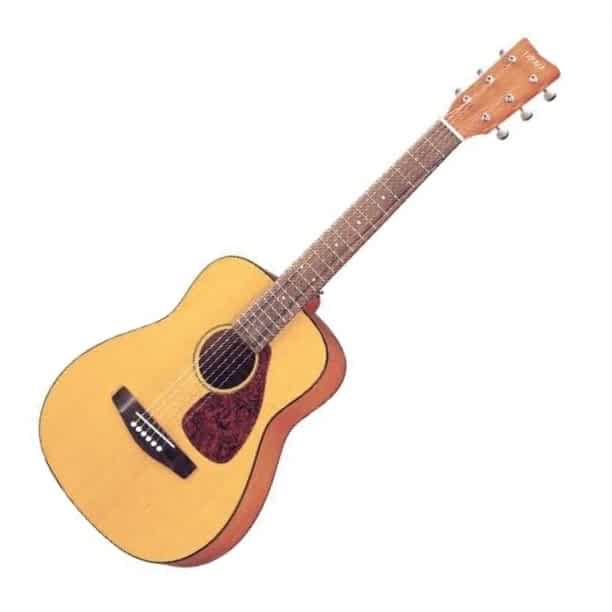
FEATURES: Solid Sitka Spruce Top
OTHER INFO: Small Body Design
- The solid Sitka spruce top contributes to a rich, resonant tone.
- Its small body design makes the JR1 lightweight and easy to carry.
- The JR1 may not project as loudly as larger acoustic guitars
When you click ‘Check Price’, you’ll see there are loads of great places to buy this item. Our personal favorite is Sweetwater for the US, and Thomann and Gear4Music for the UK & Europe.
They are the largest music retailers, with excellent customer service, competitive prices, really fast shipping, and the longest guarantees.
The professional musician who wrote this article combined many things,
from the product build, manufacturer’s reputation through to feedback
from other users, to create our famous TedScore™.
Martin's Travel Companions
When it comes to travel guitars, Martin certainly shines. The Martin LX1 Little Martin is held in high regard. Its solid spruce top and mahogany-patterned HPL back and sides create a robust sound.
This guitar is not only portable but also maintains the rich tone Martin is famous for. It’s perfect for players who crave quality sound on the go, making it a top choice for frequent travelers.
MARTIN LX1 LITTLE MARTIN
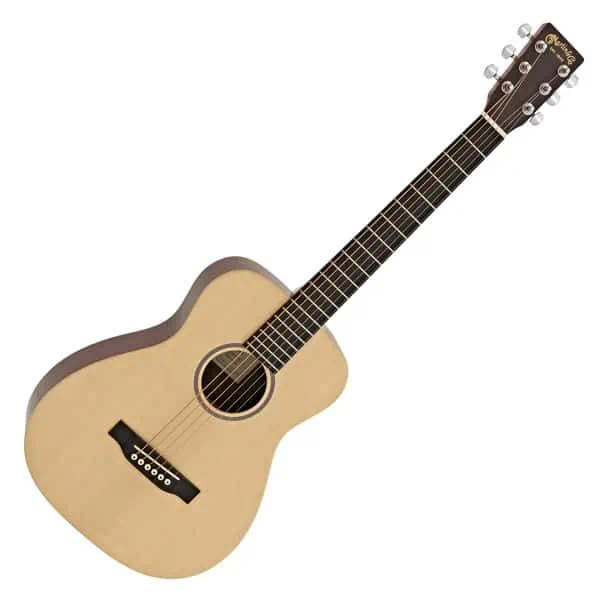
Young Players
FEATURES: Solid sitka spruce top.
- Modified low oval neck style.
- Small size makes it perfect for the young crowd
- Premium solid top emanates clear and intricate sound when strumming.
- Laminated wood body lowers its quality construction
When you click ‘Check Price’, you’ll see there are loads of great places to buy this item. Our personal favorite is Sweetwater for the US, and Thomann and Gear4Music for the UK & Europe.
They are the largest music retailers, with excellent customer service, competitive prices, really fast shipping, and the longest guarantees.
The professional musician who wrote this article combined many things,
from the product build, manufacturer’s reputation through to feedback
from other users, to create our famous TedScore™.
Fender's Entry-Level Selections
Fender’s contribution to the arena includes the Fender FA-115. This model welcomes beginners with its friendly playability and affordability. It comes with a laminated Agathis top and sapele back and sides, ensuring a warm tone.
Its smaller body is surprisingly full of sound, making it an inviting choice for new learners. This guitar’s ease of use helps build confidence as players advance in their skills.
Fender FA-15 3/4 Scale Steel
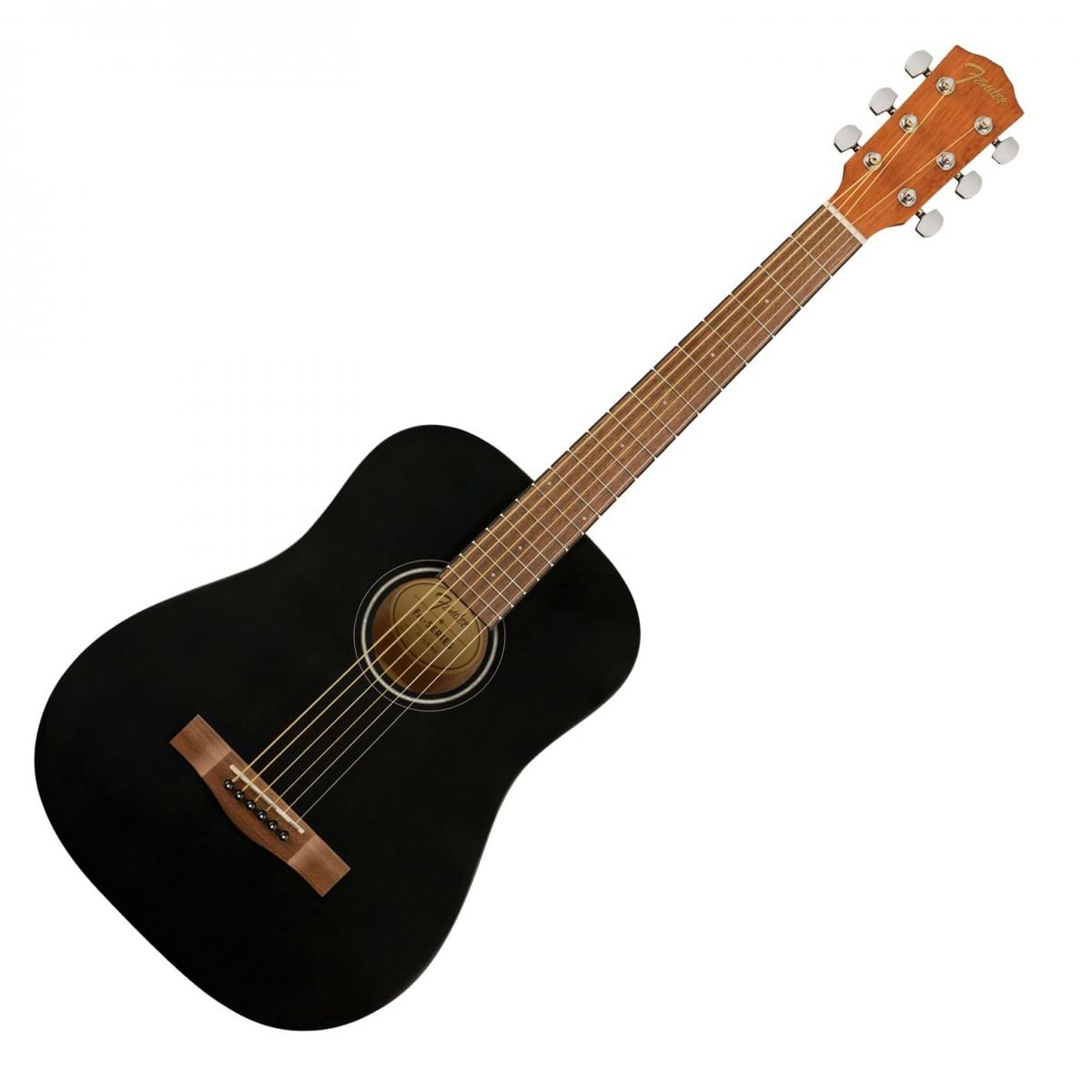
FEATURES: 3/4 scale body for easy handling and comfort
OTHER INFO: Includes a gig bag for convenient transport and protection
- Lightweight and easy to carry
- Comfortable for small hands
- Affordable entry-level option
- Limited volume compared to full-size guitars
- Not ideal for advanced techniques
When you click ‘Check Price’, you’ll see there are loads of great places to buy this item. Our personal favorite is Sweetwater for the US, and Thomann and Gear4Music for the UK & Europe.
They are the largest music retailers, with excellent customer service, competitive prices, really fast shipping, and the longest guarantees.
The professional musician who wrote this article combined many things,
from the product build, manufacturer’s reputation through to feedback
from other users, to create our famous TedScore™.
Taylor's Compact Guitars
Taylor’s offerings are impressive, with the Baby Taylor being standout models. It delivers premium sound in a scaled-down size, ideal for both children and adults with smaller hands.
The Baby Taylor shines with its warm tones, proving that size doesn’t compromise sound quality.
Taylor Baby BT1 Acoustic Travel Guitar
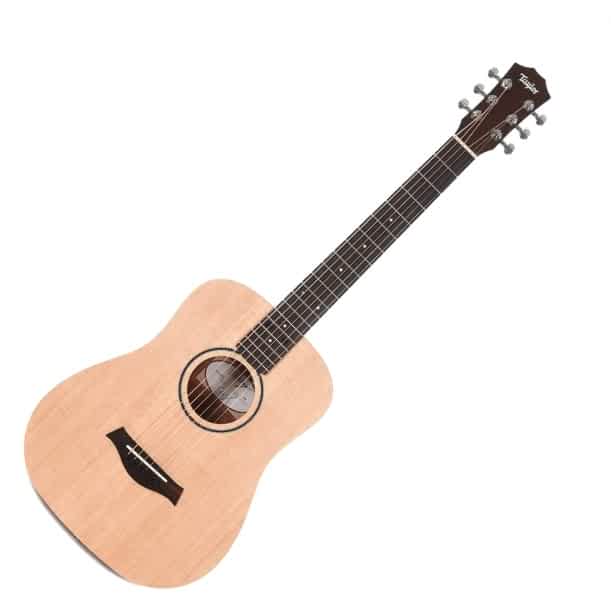
FEATURES: Scale Length: 22.75"
OTHER INFO: Sapele Neck
Taylor Baby BT1 Acoustic Travel Guitar
- Compact, lightweight, perfect for travel/kids
- Quality build with spruce top and Sapele layers
- Smooth playability; electric guitar-like neck
- Rich sound despite size
- Includes Taylor gig bag
- Affordable price point, making it accessible for newer players
- Minimalist design may not suit all tastes
- Lower volume than full-sized guitars
- Screw-on neck may deter traditionalists
When you click ‘Check Price’, you’ll see there are loads of great places to buy this item. Our personal favorite is Sweetwater for the US, and Thomann and Gear4Music for the UK & Europe.
They are the largest music retailers, with excellent customer service, competitive prices, really fast shipping, and the longest guarantees.
The professional musician who wrote this article combined many things,
from the product build, manufacturer’s reputation through to feedback
from other users, to create our famous TedScore™.
Understanding 3/4 Size Acoustic Guitar
When exploring 3/4 size acoustic guitars, it’s important to understand their unique size and advantages. These smaller-bodied instruments are perfect for beginners, travelers, and those with smaller hands. I’ll walk you through what sets them apart from full-sized guitars.
Defining the 3/4 Size Guitar
The 3/4 size acoustic guitar is designed to be more compact and portable than its full-sized counterpart.
Measuring approximately 36 inches in total length, its smaller body makes it easier to handle. Despite being 25% smaller, it maintains a standard tuning scale, offering a familiar experience for players.
This size is particularly appealing to young musicians or those with smaller frames. It offers a manageable way to learn guitar playing without the bulk and weight of a full-sized guitar.
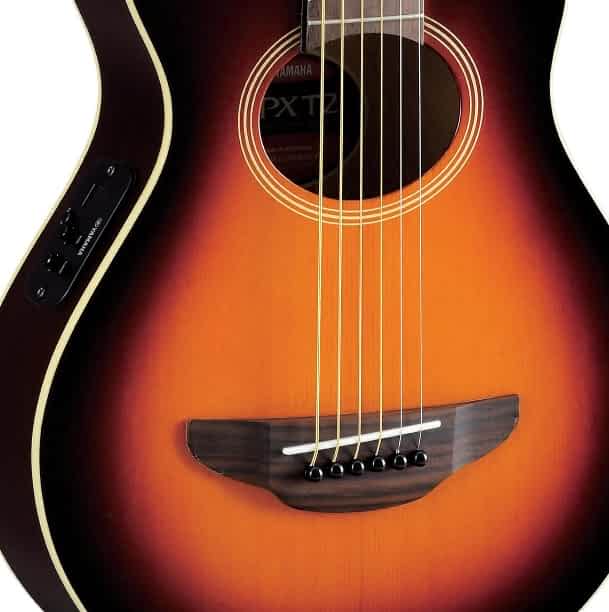
Benefits of a Smaller Body Size
A major advantage of the smaller body size is the enhanced playability.
For beginners or those travelling frequently, 3/4 size guitars provide convenience without compromising sound quality. Their lighter weight and compact design are perfect for on-the-go practice or performances.
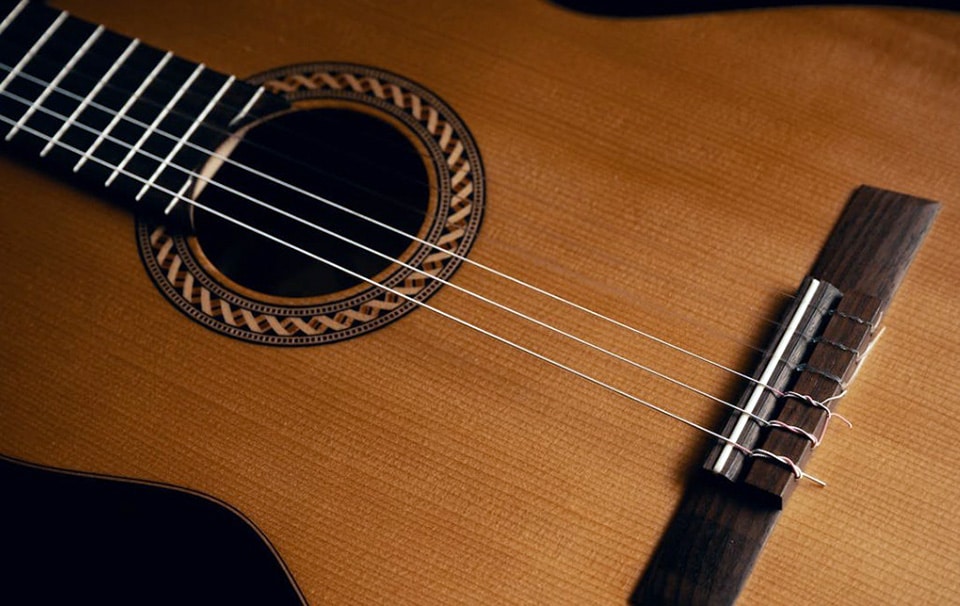
Another benefit is the guitar’s suitability for children or those with small hands. The reduced scale length allows for easier reach across the fretboard. It helps learners develop their skills more comfortably and efficiently.
Comparison With Full-Sized Guitars
Compared to full-sized guitars, 3/4-size models offer different tonal characteristics and volume.
While they might not project as powerfully, their sound is well-suited for personal practice sessions. These guitars also bring unique character to folk and mellow music genres.
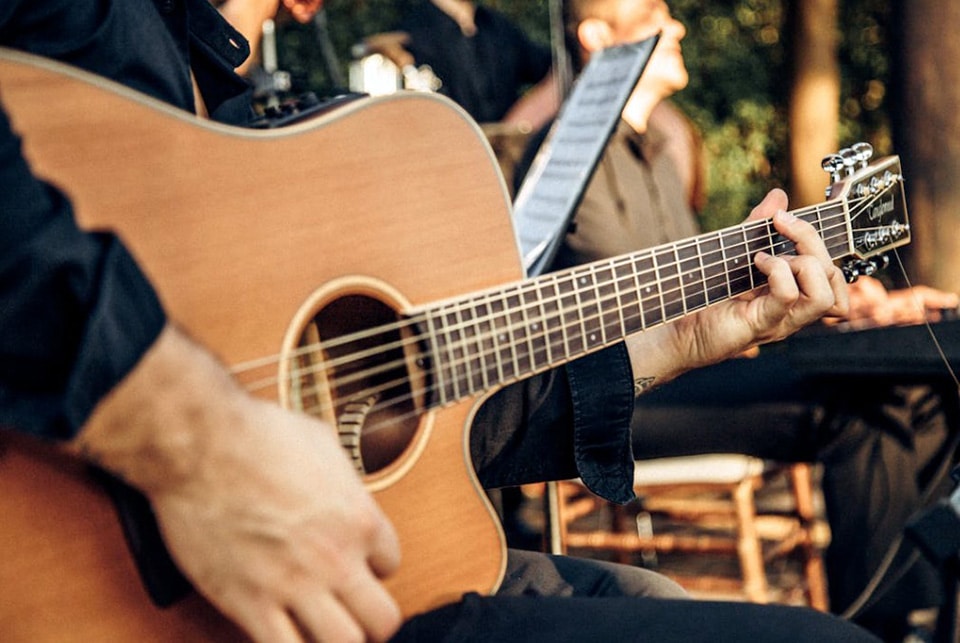
Because of their portability, they are often used as travel guitars. Though smaller in size, they still deliver the musical expression a guitarist desires.
For anyone interested in an electric guitar setup, using a capo can also be a practical choice for experimenting with higher pitches and song arrangements.
Essential Features for Beginners
When choosing a 3/4 acoustic guitar for beginners, there are key areas to consider, such as how comfortable it feels to play and the quality of materials used. These factors greatly impact the playing experience and sound quality.
Playability and Comfort
A 3/4-sized guitar offers a shorter scale length, making it easy to handle. The neck is typically more manageable for smaller hands, which reduces strain and encourages longer practice sessions.
Comfort is just as important. Given this, I often recommend guitars with a smooth, matte-finished neck to facilitate effortless movement.
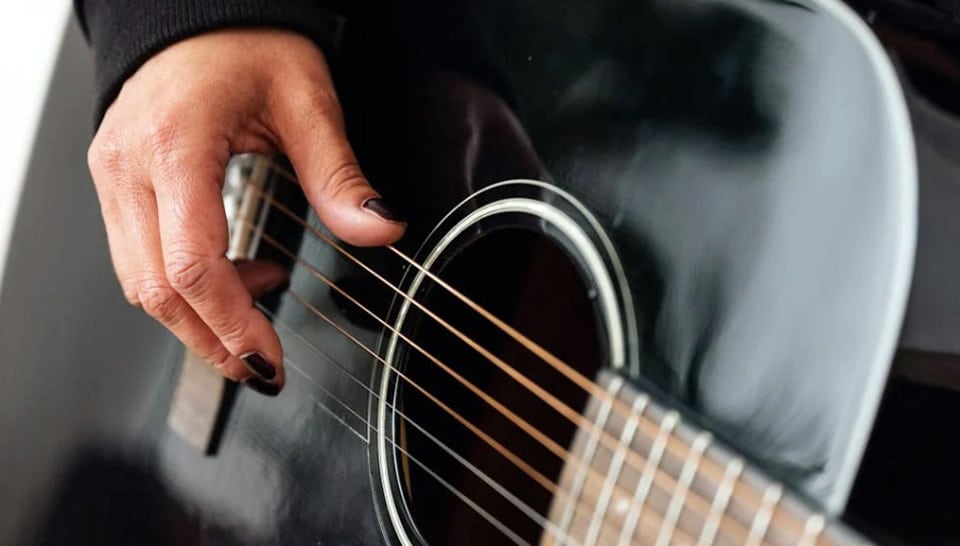
Lightweight designs are also advantageous as they lessen fatigue, allowing beginners to remain focused on mastering the basics and enjoying playing their instrument.
Quality of Tonewood
The type of wood used in a guitar’s construction affects both sound and playability. I always advise looking for guitars made with high-quality tonewoods.
A spruce top is popular for its balanced tone and excellent projection. It’s a reliable choice for beginners seeking a versatile sound.
Each type of wood produces a distinct tonal character.

Mahogany backs and sides, for example, offer a warmer tone. This combination of woods strikes an excellent balance, giving beginners a clear and expressive sound palette to explore, making practice more rewarding.
Importance of Sound Projection
Sound projection is crucial for an acoustic guitar, as it determines how well the sound travels. This makes it particularly important for beginners who play in various settings.
I advise looking for a guitar with a reputation for strong projection. A good 3/4 guitar, even with its compact body, should fill a room.
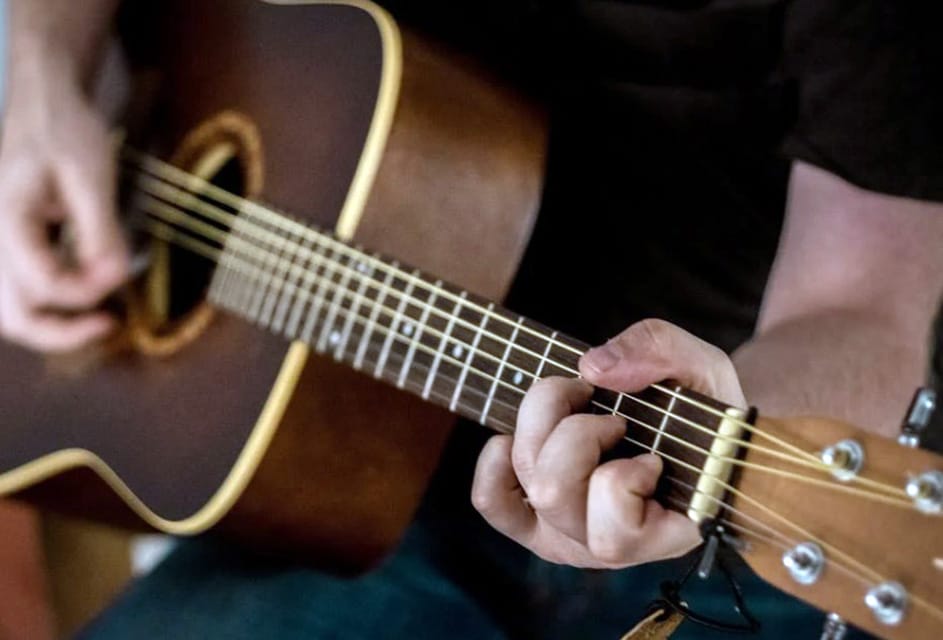
The structure of the guitar plays a role here. A well-crafted body and correctly braced top enhance the sound’s projection without sacrificing tone quality.
If you’re also using an electric guitar, consider adding a capo to try out different pitches and sounds, which can expand your musical options and learning experience.
Materials and Build Quality
When choosing the best 3/4 acoustic guitar for beginners, the materials and build quality play a crucial role.
Different tonewoods can drastically affect sound quality, while structural designs like X-bracing contribute to durability and resonance. The guitar’s finish not only adds to its aesthetic appeal but also influences its tone.
Exploring Different Tonewoods
As an enthusiast of 3/4 acoustic guitars, I find that the type of wood used in the guitar’s construction influences the sound it produces.
For example, spruce tops are common among these guitars due to their bright and clear tone. It’s ideal for beginners who want versatility across genres.

Another popular choice is sapele, which offers a warm, balanced sound.
Sapele resembles mahogany but tends to be slightly denser, contributing to a robust midrange tone that’s suitable for various playing styles. A rosewood fingerboard adds a touch of luxury, giving a smooth feel while playing and enhancing tonal depth.
Structural Designs: X-Bracing and More
Let’s talk about structure. The X-bracing technique is a critical design feature in many quality guitars, enhancing sound projection and durability.
I’ve noticed how X-bracing allows the top to vibrate effectively, delivering a rich, resonant sound even in smaller-bodied guitars.

Sometimes, manufacturers may experiment with other bracing patterns to tweak sound and strength. But for beginners, sticking with trusted designs like X-bracing ensures a reliable playing experience. It pairs well with various tonewoods and provides a sound chassis for budding guitarists.
Finishes and Aesthetics
The finish of a guitar is more than just its outer beauty. A natural finish is popular among 3/4 guitars because it allows the wood to breathe, enhancing sound quality and ageing gracefully over time.
Personally, I find a natural finish charming, offering a glimpse into the innate beauty of the wood itself.
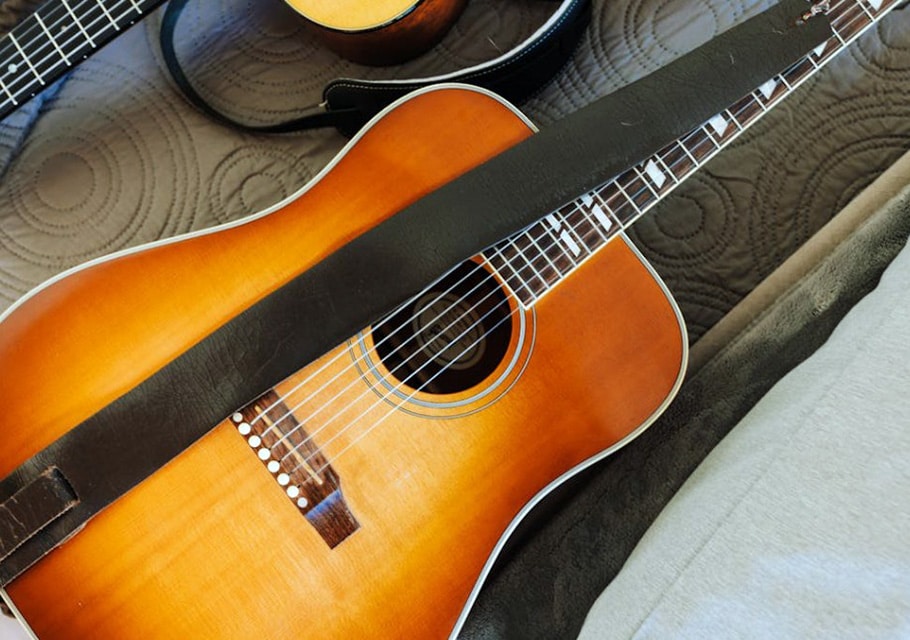
Beyond aesthetics, the finish protects the guitar from moisture and wear. Variations like gloss or matte finishes can alter the instrument’s look and sound subtly, allowing for personal expression while maintaining the guitar’s integrity.
Each finish type has its quirks, providing beginners with options that align with their tastes and needs.
Electronics and amplifiers
When diving into the world of 3/4 acoustic guitars for beginners, considering electronics and amplification is crucial. These elements allow for enhanced versatility in performance settings, such as live gigs or practice sessions with friends.
Acoustic-Electric Options
Amplifying a 3/4 acoustic guitar can significantly alter the playing experience! Many models come equipped with built-in electronics, transforming them into acoustic-electric guitars. These enable smooth transitions to amplified sound, perfect for when you want to play on stage. Plugging in is as simple as connecting your guitar to an amp, giving you control over volume and tone.
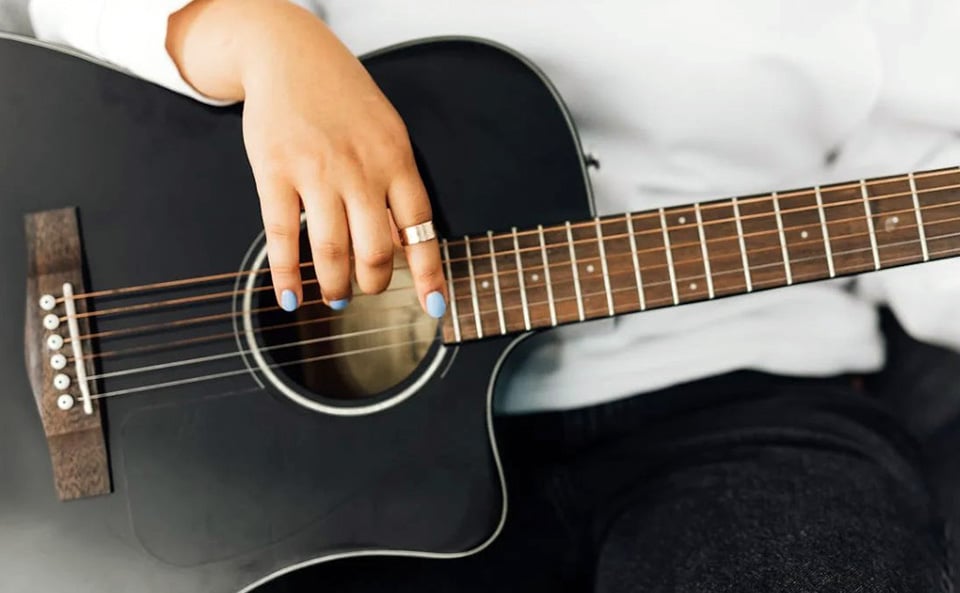
Some popular 3/4 models, like those from Yamaha, incorporate user-friendly electronic systems. These often feature a built-in tuner, making life a lot easier when trying to stay in tune amidst performances.
A capo can also be a great addition for electric setups, letting you experiment with different keys effortlessly.
Understanding Onboard Electronics
Onboard electronics can feel a bit mysterious at first.
Generally, these systems include pickups, which capture the guitar’s sound and send it to the amplifier. Some setups also offer EQ controls, which allow you to tweak the bass, mid, and treble frequencies for a more personalised tone.
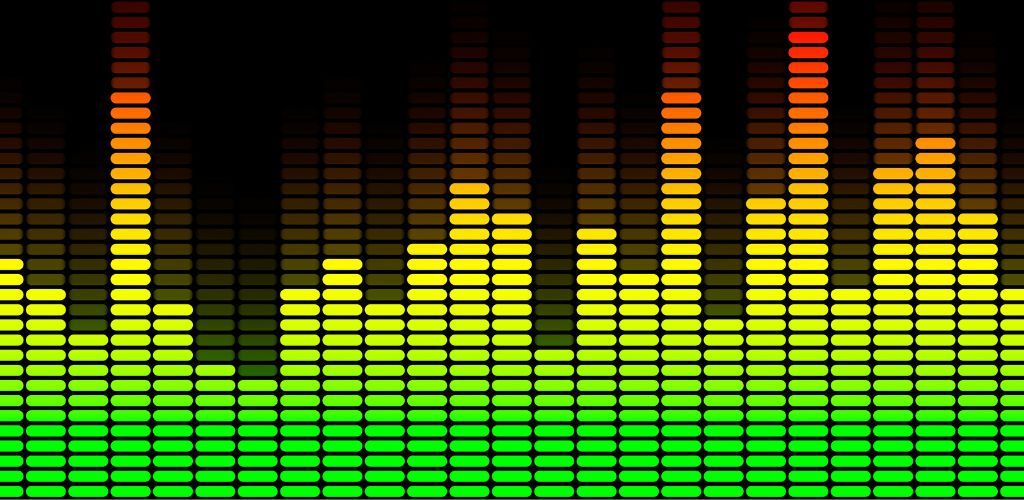
The pickup, often located near the bridge, is the unsung hero in this setup. It plays a vital role in ensuring the authentic acoustic tone isn’t lost when amplified.
Many beginners appreciate the seamless integration of these systems, as they require minimal setup. Being familiar with these features can enhance your playing experience dramatically.
Budget Considerations
When it comes to selecting a 3/4 acoustic guitar for beginners, price is often a key factor. Finding the best value without sacrificing quality can be challenging, but there are ways to find affordable options without sacrificing performance.
Finding Value in Affordable Guitars
I often recommend looking for guitars that maximize features within a limited budget. Brands like Yamaha and Cordoba offer models that remain affordable while still focusing on playability and sound quality. It’s essential to look for solid tops, as they usually provide better sound than all-laminate models.
Buying from well-established brands is a wise move. They typically have reliable quality control, ensuring that even their lower-priced guitars are built to a decent standard. Accessories bundled with these guitars, such as gig bags and tuners, can also enhance value, especially for beginners.

Consider the resale value, too. Opting for a known brand may result in a better resale price if you decide to upgrade later. So, while sticking to a budget, it’s possible to find a guitar that doesn’t feel like a compromise.
Balancing Cost and Quality
Balancing cost and quality can be tricky, but understanding what features are important helps. I usually emphasize the importance of the build material.
A mix of solid and laminate woods can keep costs down while providing excellent sound quality. Make sure to avoid very cheap guitars, as they often lack both durability and sound.
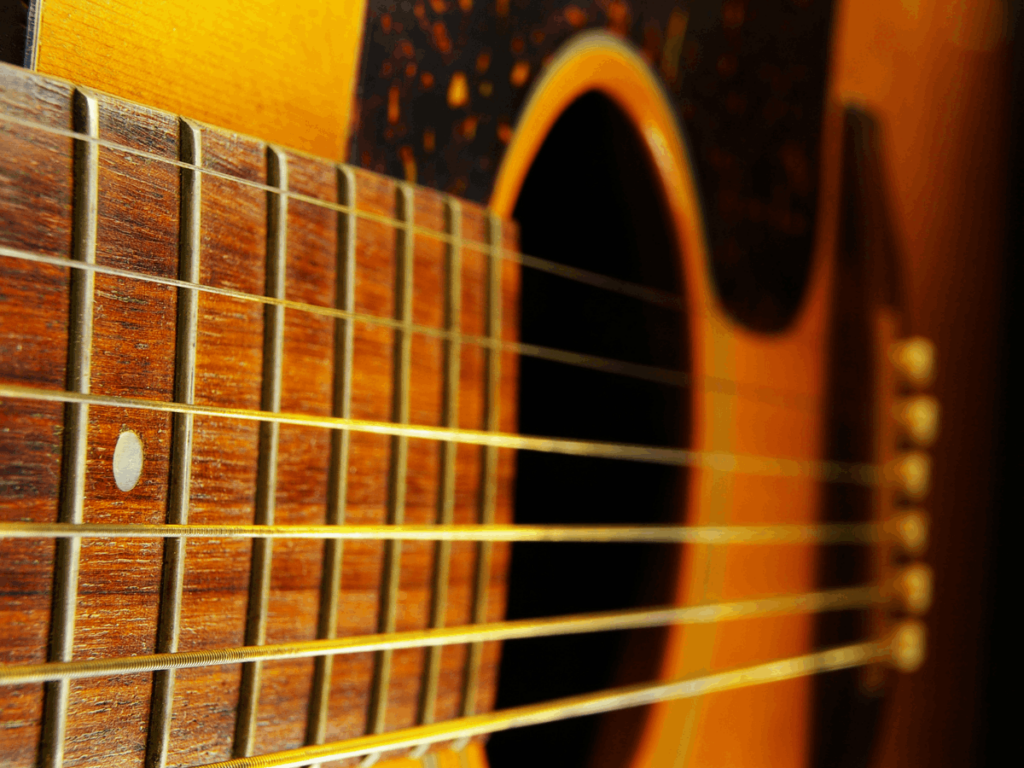
Checking user reviews and ratings can be insightful too. Often, actual user feedback highlights any issues with tuning stability or craftsmanship.
I suggest investing in a basic capo, essential for expanding your playing capabilities, especially on a beginner electric guitar.
Choosing wisely means considering long-term play and enjoyment. By considering both the cost and essential features, you can select a guitar that fits your budget and provides a fulfilling learning experience.
Accessories for the Starting Guitarist
Getting started with a new guitar involves more than just the instrument itself. It’s essential to have the right accessories to protect, enhance, and ease your playing experience. Below, I’ve highlighted two crucial areas to focus on as you start your musical journey.
Gig Bags and Cases
A gig bag is among the first investments every beginner should consider. Protecting your instrument from scratches and falls is vital, especially if you’re traveling with your 3/4 acoustic guitar. Some gig bags come with extra padding to safeguard your nylon-string guitar during trips.
I always recommend a padded gig bag or a durable hard case. These not only provide safety but also often come with extra pockets. You can store sheet music, a tuner, or even your favourite capo.
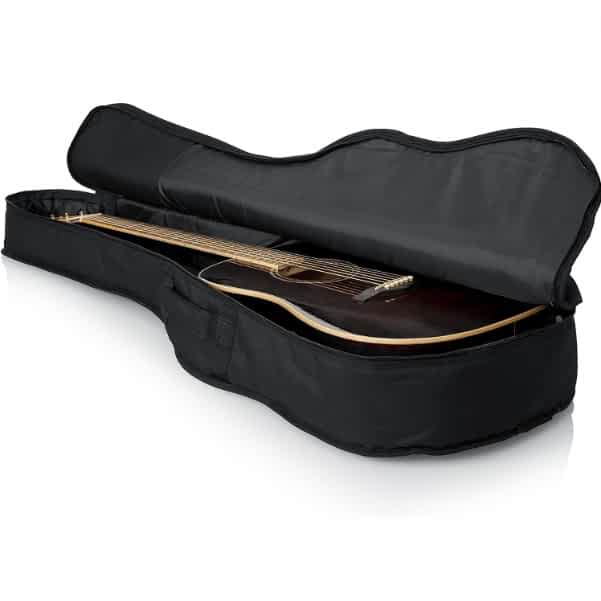
Make sure your bag or case is appropriately sized if you’re using a dreadnought guitar to prevent any unnecessary movement inside.
Essential Extras
A satisfying guitar journey isn’t complete without key extras. Among the essentials are strings, and having spare nylon strings is a lifesaver for classical guitarists.
Pairing your guitar with a reliable tuner ensures you always sound your best, keeping your practice sessions productive.
Another crucial accessory is the capo, which is incredibly handy for experimenting with different pitches on your 3/4 acoustic guitar. A quick-release capo works wonders on both acoustic and electric guitars. It effortlessly adjusts the tension for optimal sound and is simple to reposition during a session.
By selecting the right accessories, you’ll set yourself up for a smooth and enjoyable start to your guitar-playing adventure.
Maintenance and Upkeep
Maintaining your 3/4 acoustic guitar ensures longevity and excellent sound quality. Careful handling, consistent tuning, and regular string changes are crucial for the best performance and lifespan of the guitar.
Caring for Your Acoustic Guitar
I always store my guitar in a humidity-controlled environment to prevent warping and cracking, which is vital for a wooden instrument.
Using a guitar humidifier during dry months maintains the wood’s integrity. Wiping down the guitar with a soft cloth after playing removes sweat and oils that can damage the finish over time.
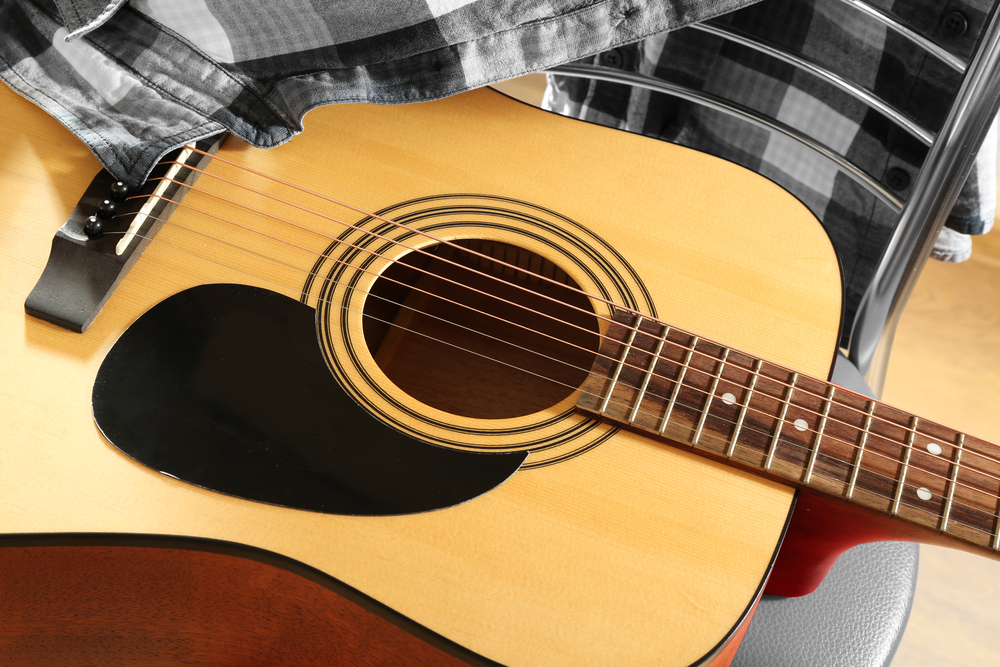
Don’t forget the strings! Regularly cleaning them with a string cleaner helps them last longer and sound better.
Keep it in its gig bag when not in use to protect it from dust and accidental dings. Occasional polishing with a guitar-specific polish can help maintain its shine.
Regular Tuning and String Changes
Keeping my guitar in tune is as essential as playing it. I use a reliable tuner; I check the tuning before each session. Regular tuning ensures optimal sound quality and helps me develop a better ear for music.
Change the strings every few months or more often if I play frequently. Fresh strings improve the tone and playability. When replacing strings, I make sure to have the right gauge and type to suit my style.

For electric guitar enthusiasts, I recommend a capo to experiment with different sounds without constantly retuning. This is a handy tool that can expand my playing possibilities.
Choosing the Right Guitar for Your Style
When selecting a 3/4 acoustic guitar, it’s crucial to consider how it complements your playing style. A guitar that suits your style can enhance your techniques and elevate your playing experience.
Acoustic Guitars for Fingerstyle Playing
For those interested in fingerstyle, the guitar’s body and wood type matter. A smaller-bodied guitar like a 3/4 size offers greater comfort and playability.
Tonewoods such as nyatoh and nandu produce a warm, resonant sound often preferred for fingerstyle.
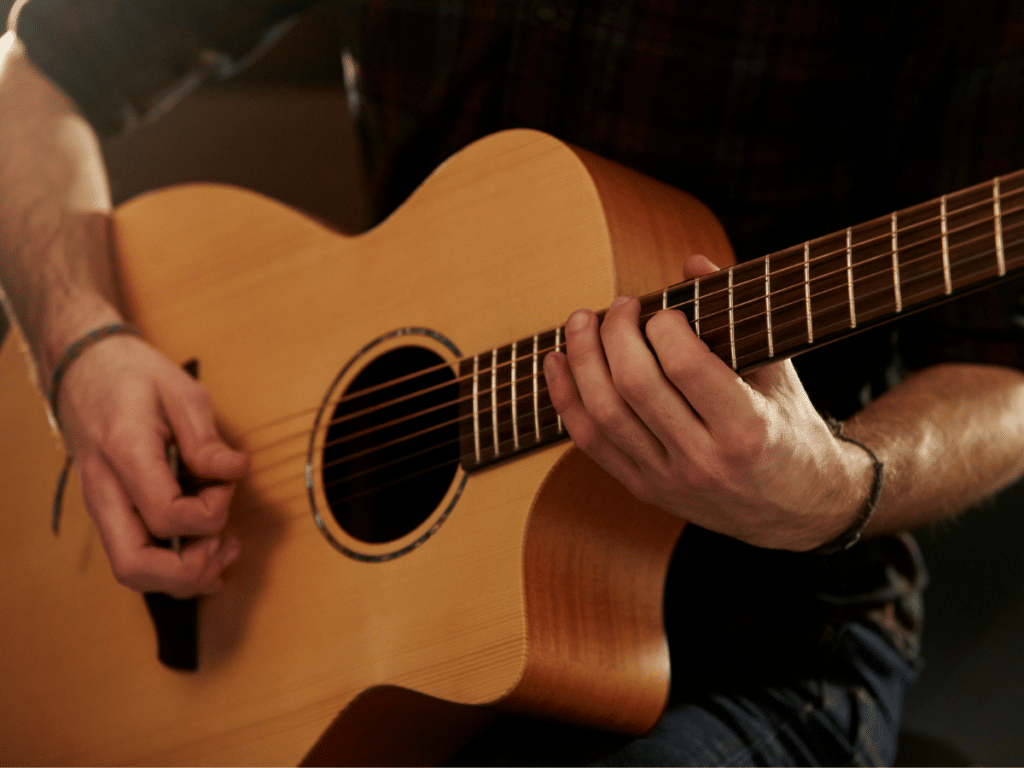
Look for a guitar with a wider nut width to accommodate fingerpicking. This spacing allows better finger movement across the strings. A model with a smooth, quick neck will also make a big difference as you explore intricate melodies.
The Best Guitars for Strumming Techniques
Strumming demands a guitar that can project sound effectively. When I strum, I want a rich and full tone, so the choice of tonewoods is essential. Nandu wood is great for a bright sound, and nyatoh adds a nice depth that enhances the rhythm and beat.
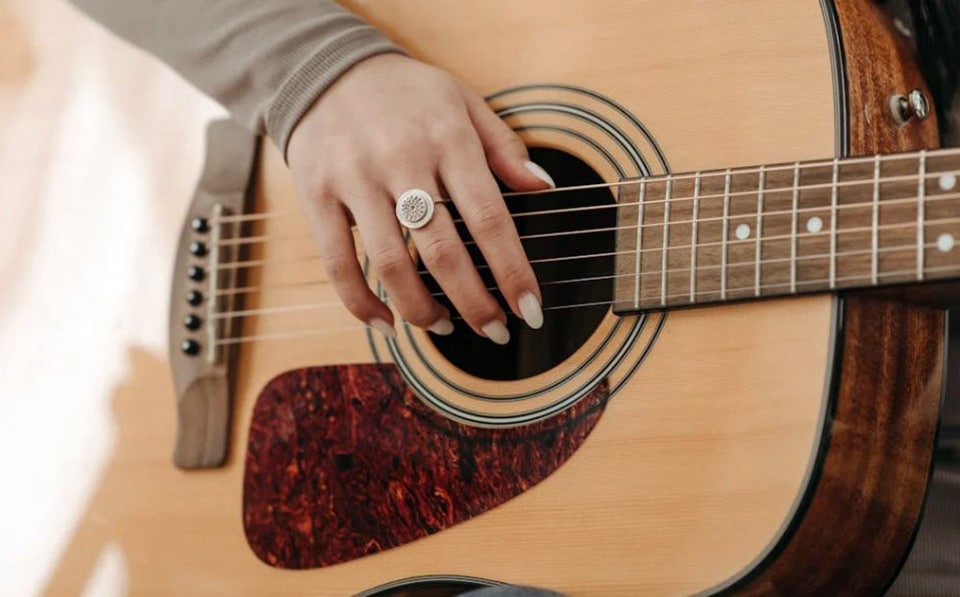
You should aim for a guitar with a sturdy neck to handle the strumming pressure. The 3/4 size offers versatility without being cumbersome, which is key to maintaining a comfortable strumming rhythm. Keep a capo handy if you’re also experimenting with electric or acoustic-electric models, as it can expand your range of tunes beautifully.
Making Your First Guitar Purchase
Buying your first 3/4 acoustic guitar involves checking quality, budget, and suitability for beginners. Whether you’re visiting a local store or shopping online, knowing what to look for can ease the process.
What to Look for in a Store
Walking into a guitar store for the first time might feel overwhelming, but it’s also exciting! I always start by looking at the range of guitars available, focusing on brands known for reliability and quality, like Yamaha and Taylor.
It’s important to feel the guitar in your hands. The comfort of holding the guitar and strumming a few strings makes a big difference.
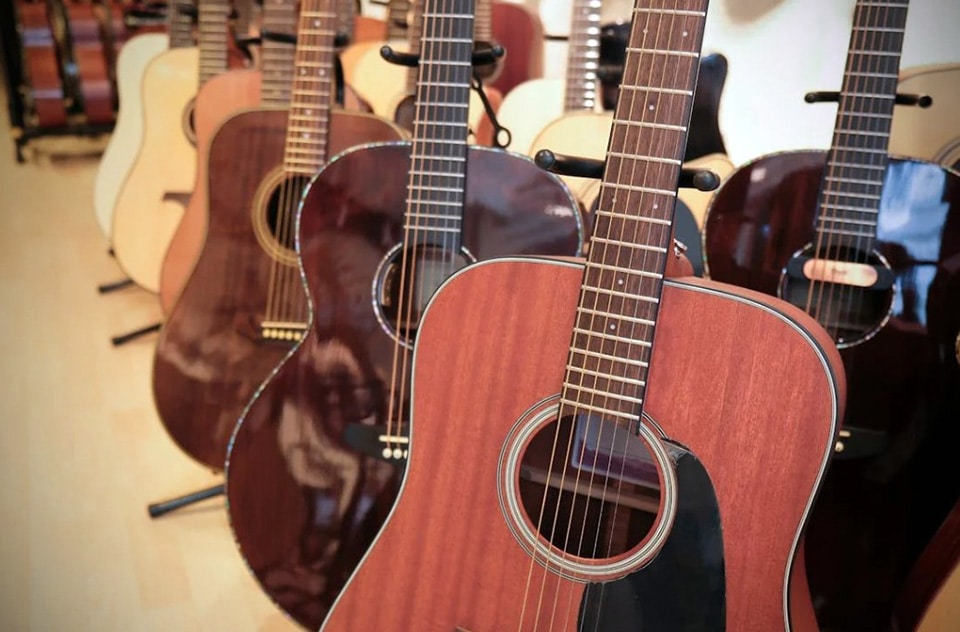
Staff are usually friendly and eager to help beginners, so don’t hesitate to ask questions.
Pay attention to additional accessories offered. Many stores sell guitar bundles with gig bags, tuners, and picks. These extras can be really helpful, especially when starting out. This guarantees your readiness from the very beginning.
Online Shopping Tips
When shopping online, research and reviews are invaluable resources. Look for high-quality acoustic instruments with good feedback from other buyers. Websites usually feature customer ratings that can guide me toward the best options.
Detailed descriptions are crucial. They should include materials, sound quality, and dimensions. Videos and audio samples can also give a real sense of what I’m purchasing without physically being there.
Consider buying from reputable online retailers who often offer return policies and warranties. This helps if the guitar doesn’t meet my expectations. For electric guitars, I recommend adding a capo to enhance your playing experience.
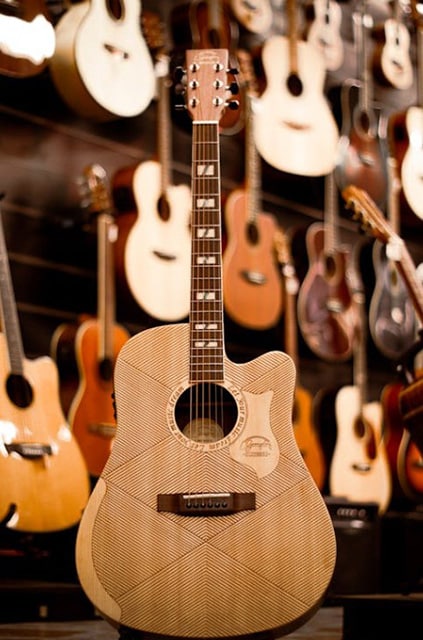
Best 3/4 Acoustic Guitar for Beginners
Final Verdict
When searching for the best 3/4 acoustic guitar for beginners, many players find that a steel string acoustic offers a bright and resonant sound, making it an excellent choice for those starting their musical journey.
While classical guitars typically feature soft nylon strings that are easier on the fingers, steel string acoustics provide a different tonal quality that many guitar players prefer. Brands like Taylor Guitars and Fender offer fantastic options that cater to beginners, ensuring a comfortable playing experience.
For those who may also be interested in transitioning to an electric guitar later, starting with a good 3/4 acoustic can help develop basic guitar techniques that are applicable across different types of guitars.
Additionally, platforms like Fender Play offer lessons specifically designed for beginners, making it easier to learn how to play guitar effectively. Ultimately, finding the best beginner acoustic guitar, whether it’s a 3/4 size or full size, will set the foundation for a rewarding musical journey.
Wait! There’s more…
If you’re looking to enhance your playing experience, this article on “Best Guitar Picks for Acoustic” provides insightful recommendations to help you choose the perfect pick for your acoustic guitar!
FAQ's
The best size 3/4 guitar for a beginner is often the Yamaha JR1, as it offers a comfortable playability, excellent sound quality, and is specifically designed for younger players or those with smaller frames.
Ed Sheeran uses a 3/4 guitar for its portability and comfortable playability, allowing him to easily perform and travel while still achieving a rich sound quality in his music.
A 3/4 guitar is not necessarily too small for adults, as many find it comfortable and easier to handle, especially for those with smaller frames or for players seeking a lightweight option for travel and performance.
Yes, 3/4 acoustic guitars are good, especially for beginners, children, or those looking for a more portable instrument, as they offer a comfortable size while still providing quality sound and playability.




